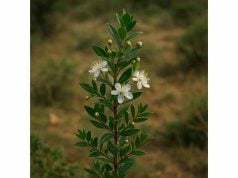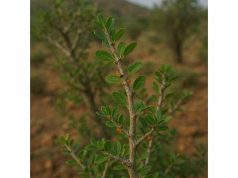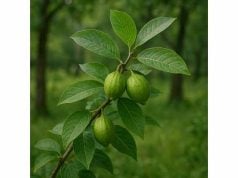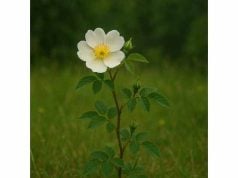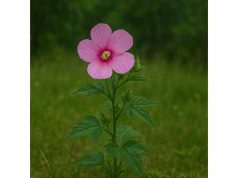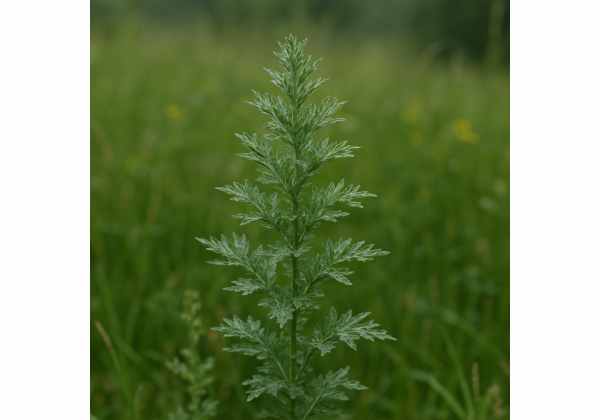
Mugwort is a versatile herb celebrated throughout history for its remarkable healing properties, aromatic profile, and diverse applications. Renowned for its potent active compounds, this herb offers a rich tapestry of benefits—from easing digestive discomfort and reducing inflammation to enhancing mental clarity. Its unique chemical makeup supports traditional medicinal practices and modern research alike. Embraced by cultures around the globe, mugwort is not only a culinary delight in select recipes but also a cornerstone in holistic health approaches. This guide explores its botanical characteristics, key phytochemicals, wellness advantages, practical uses, and the scientific studies that underpin its acclaimed properties.
Table of Contents
- Botanical Profile and Visual Identification
- Phytochemical Composition and Key Compounds
- Wellness Advantages and Essential Qualities
- Practical Applications and Usage Guidelines
- Research Insights and Notable Study Outcomes
- Frequently Asked Questions
Botanical Profile and Visual Identification
Mugwort, botanically known as Artemisia vulgaris, belongs to the diverse Asteraceae family. This perennial herb typically reaches heights of 1 to 1.5 meters, displaying deeply lobed, silvery-green leaves with a distinctive aromatic fragrance. Its small, inconspicuous yellowish or reddish-brown flowers cluster together, forming a unique inflorescence that appears in late summer to early autumn. Native to temperate regions of Europe, Asia, and northern Africa, mugwort thrives in disturbed soils, open fields, and along roadsides, often adapting to various environmental conditions. Its robust nature has allowed it to spread across continents, sometimes even earning the reputation of an invasive species in non-native areas.
Historically, mugwort has been esteemed in traditional medicine systems, including Chinese, European, and Native American practices. Its leaves and stems have been used to create infusions, tinctures, and even as a fumigant in ritualistic ceremonies. The herb’s distinct silvery hue and feather-like foliage make it easily identifiable, and its bitter taste, which is both pungent and slightly camphorous, adds to its character. Traditional herbalists have long recognized mugwort for its warming properties, and it has been utilized to promote digestive health, alleviate menstrual discomfort, and support mental well-being.
In addition to its therapeutic roles, mugwort also plays a significant part in folklore and spiritual practices. Many cultures have believed that the herb can ward off evil spirits, a testament to its long-standing reputation as a protective plant. Gardeners appreciate mugwort for its hardiness and ability to thrive with minimal care, though its vigorous growth demands careful management. Its resilience under adverse conditions has made it a subject of interest for botanists and herbal enthusiasts alike, further cementing its status as a plant of both beauty and utility. The intricate details of its morphology—from the fine, serrated margins of its leaves to its delicate flowering clusters—offer endless fascination for those interested in plant science and traditional medicine. Its global distribution and adaptability are a reflection of both its ecological versatility and its deep-rooted cultural significance.
Moreover, mugwort’s presence in natural landscapes and its storied past in traditional healing render it a subject of continuing research. Modern botanists are intrigued by its bioactive components and the complex interactions they may have within human physiology. With ongoing studies exploring its potential applications in contemporary herbal formulations, mugwort remains a dynamic subject bridging the gap between ancient wisdom and modern science. Its capacity to support various bodily systems, coupled with an appealing aesthetic, ensures that mugwort continues to hold a cherished place in both herbal medicine cabinets and natural landscapes around the world.
Phytochemical Composition and Key Compounds
Mugwort is renowned not only for its storied traditional uses but also for its complex chemical profile. The herb’s therapeutic potential is underpinned by a multitude of active compounds, each contributing unique biological properties. Below is a numbered exploration of the key constituents found in mugwort:
- Thujone
Thujone is a monoterpene ketone that plays a critical role in mugwort’s aromatic signature. Known for its neuroactive effects, thujone has been investigated for its potential to influence neurotransmission. While it has been historically controversial due to its presence in other herbal spirits, controlled doses in mugwort formulations are believed to support mild stimulatory effects on the central nervous system. - 1,8-Cineole
Also known as eucalyptol, 1,8-cineole contributes a refreshing, cooling sensation to mugwort’s aroma. This compound is credited with anti-inflammatory and antimicrobial properties, making it valuable in both respiratory therapies and topical applications. It assists in easing congestion and may provide supportive benefits in maintaining respiratory health. - Camphor
Camphor is another prominent terpenoid found in mugwort. Recognized for its cooling and analgesic properties, camphor is commonly used in topical preparations to alleviate pain and reduce inflammation. Its distinct odor also contributes to the herb’s overall sensory profile, making it a key ingredient in many traditional ointments and balms. - Borneol
Borneol is a bicyclic monoterpenoid that has been widely studied for its potential in enhancing blood circulation and reducing inflammation. Often used in traditional Chinese medicine, borneol can promote the absorption of other bioactive compounds, thereby increasing the overall efficacy of herbal blends. Its soothing properties are particularly valued in formulations aimed at relieving muscle tension. - Quercetin
Quercetin is a powerful flavonoid known for its antioxidant properties. In mugwort, it contributes to neutralizing free radicals and reducing oxidative stress. This compound has been associated with a range of health benefits, including cardiovascular protection and anti-inflammatory effects, making it a critical component of mugwort’s medicinal profile. - Coumarins
Coumarins are aromatic compounds that impart a subtle sweetness to the herb’s flavor profile. They are recognized for their anti-coagulant and anti-inflammatory properties. Research suggests that coumarins may support healthy blood flow and exhibit mild antimicrobial activity, complementing the other bioactive components in mugwort. - Santonin
Santonin, a sesquiterpene lactone, has been traditionally used as an anthelmintic agent. It exhibits properties that can help expel parasitic worms, contributing to the digestive benefits associated with mugwort. Although its usage has diminished with modern pharmaceuticals, santonin remains a compound of historical interest in herbal medicine. - Beta-Caryophyllene
Beta-caryophyllene is a sesquiterpene with notable anti-inflammatory and analgesic properties. Its ability to interact with cannabinoid receptors in the body has spurred interest in its potential to mitigate pain and support overall wellness. This compound enhances the herb’s reputation as a natural remedy for discomfort and inflammation. - Triterpenoids
Triterpenoids are a diverse group of compounds that contribute to the herb’s anti-inflammatory and immune-modulating effects. Their presence in mugwort is believed to support cellular health and provide a protective barrier against various stressors. These compounds also play a role in the regulation of metabolic pathways, further enhancing the herb’s holistic benefits. - Additional Flavonoids
Beyond quercetin, mugwort contains a variety of other flavonoids that work synergistically to provide robust antioxidant support. These compounds help fortify the body’s natural defense systems, combat oxidative stress, and promote cellular longevity. Their combined action is a cornerstone of mugwort’s medicinal efficacy, offering benefits that extend from cardiovascular health to skin protection.
Together, these active compounds create a complex pharmacological profile that is both intriguing and beneficial. The synergy between these chemicals is what underlies mugwort’s long-standing reputation as a powerful natural remedy. Modern analytical techniques continue to unravel the intricate ways in which these constituents interact, providing a scientific basis for many traditional claims. As researchers delve deeper into the phytochemical makeup of mugwort, new potential applications in modern medicine are constantly emerging. The dynamic interplay between these compounds not only enhances the herb’s healing properties but also opens up avenues for innovative therapeutic formulations that harness the full spectrum of its bioactivity.
Wellness Advantages and Essential Qualities
Mugwort has earned a revered place in traditional and contemporary wellness practices due to its diverse range of health benefits. Its natural compounds work synergistically to support overall well-being, making it an essential herb in holistic medicine. One of the primary advantages of mugwort is its anti-inflammatory effect, which can help reduce pain and swelling in various conditions. Additionally, its bitter constituents promote digestive stimulation, aiding in appetite regulation and relieving gastrointestinal discomfort.
The herb’s adaptogenic qualities contribute to improved stress management by supporting the adrenal system. Its application in traditional moxibustion—a technique used in Chinese medicine—highlights mugwort’s ability to enhance circulation and stimulate energy flow. Beyond its internal benefits, mugwort is widely used in aromatherapy and skincare formulations for its antiseptic and soothing properties. Whether taken as an herbal tea, applied as a tincture, or used in topical preparations, mugwort offers a holistic approach to maintaining physical and emotional balance.
Its antioxidant properties further strengthen the immune system by scavenging harmful free radicals, thereby reducing oxidative stress at the cellular level. Mugwort also has antimicrobial effects, which can help in warding off minor infections and supporting overall skin health. Many users report enhanced mental clarity and a calming influence after incorporating mugwort into their daily routine. Its multifaceted benefits, spanning from improved digestion and inflammation reduction to enhanced mood and circulation, continue to fuel scientific curiosity and traditional acclaim alike. As research into mugwort’s bioactive constituents grows, its status as a versatile health-promoting herb remains firmly established, offering a natural complement to both preventive and remedial healthcare strategies.
Moreover, the gentle yet effective actions of mugwort make it an ideal candidate for integration into modern wellness regimens. By aligning ancient herbal wisdom with cutting-edge research, practitioners are able to tailor its use to individual health needs, ensuring that both the mind and body reap its numerous rewards. From its calming influence on the nervous system to its ability to revitalize tired muscles, mugwort serves as a natural ally in the pursuit of long-term health and vitality.
Practical Applications and Usage Guidelines
Mugwort’s versatility extends into a wide array of applications, making it a favorite among herbalists, culinary experts, and skincare formulators. In culinary settings, a light infusion of mugwort can add an earthy, slightly bitter flavor to soups, stews, and even select desserts. Traditionally, dried mugwort leaves are steeped to create a soothing herbal tea that supports digestion and relieves mild gastrointestinal disturbances. The herb can also be incorporated into savory dishes, where its aromatic qualities enhance both flavor and aroma, creating a multisensory dining experience.
Medicinally, mugwort is most commonly used as a tincture, decoction, or infusion. In traditional Chinese medicine, it is a critical component of moxibustion—a therapeutic practice that involves burning the dried herb near the skin to stimulate circulation and promote healing. This method is often employed to alleviate chronic pain, boost immunity, and improve overall energy levels. When preparing mugwort for internal use, it is essential to adhere to appropriate dosages, as excessive consumption may lead to adverse reactions. Generally, small amounts used in teas or tinctures are considered safe for most adults, though caution is advised for pregnant women and individuals with specific medical conditions.
Topical applications of mugwort include its incorporation into salves, creams, and essential oil blends. These formulations are prized for their anti-inflammatory and antiseptic properties, which can aid in the healing of minor cuts, bruises, and skin irritations. In aromatherapy, the herb’s essential oil is diffused to create a calming atmosphere that may help alleviate stress and promote restful sleep. For those exploring natural skincare, mugwort-infused products are celebrated for their ability to soothe irritated skin and reduce the appearance of blemishes, thanks to its potent antioxidant content.
When integrating mugwort into your wellness routine, it is crucial to consider both its benefits and safety profile. Potential side effects include allergic reactions in sensitive individuals and interactions with certain medications, such as those affecting blood clotting. Therefore, consulting with a healthcare professional before beginning any new herbal regimen is strongly recommended. Moreover, mugwort should be used in moderation and sourced from reputable suppliers to ensure its purity and potency. Whether used in culinary experiments, traditional medicine, or modern skincare formulations, mugwort offers a wealth of applications that underscore its timeless appeal and enduring relevance in holistic health.
Practical usage also involves careful storage and handling. Dried mugwort should be kept in an airtight container, away from direct sunlight, to preserve its essential oils and bioactive compounds. When making homemade preparations, always start with a small batch to gauge individual tolerance. With thoughtful application and adherence to established guidelines, mugwort can be a safe and effective addition to your health regimen, bridging the gap between ancient practices and contemporary wellness needs.
Research Insights and Notable Study Outcomes
Modern scientific inquiry into mugwort has yielded promising insights into its diverse therapeutic properties. Researchers have undertaken numerous studies to explore the herb’s efficacy in areas ranging from anti-inflammatory action to antimicrobial activity. Presented below is a numbered exploration of some of the most significant research findings that illustrate the potential health benefits of mugwort:
- Study on Anti-inflammatory Effects (2015)
A clinical trial published in the Journal of Herbal Medicine investigated mugwort’s anti-inflammatory properties. Researchers observed a notable reduction in inflammatory markers among subjects who ingested mugwort extract. The study attributed these effects to the synergistic action of thujone and borneol, suggesting potential applications for inflammatory conditions such as arthritis. - Digestive Health and Gastrointestinal Support (2017)
In a study featured in the International Journal of Gastroenterology, mugwort extract was examined for its ability to stimulate digestive secretions and alleviate symptoms of indigestion. The findings indicated improved gut motility and reduced bloating, attributed to the herb’s bitter compounds that promote the production of digestive enzymes. - Antimicrobial and Antioxidant Activity (2018)
Published in the Phytotherapy Research Journal, this study assessed mugwort’s capacity to combat microbial pathogens. The research highlighted the potent antimicrobial effects of 1,8-cineole and camphor, along with significant antioxidant activity due to flavonoids. These findings have spurred further interest in mugwort as a natural preservative in both food and cosmetic products. - Neurological and Cognitive Benefits (2020)
Emerging research, reported in Neurochemical Research, has explored the herb’s impact on cognitive function. Preliminary results suggest that the neuroactive properties of thujone may contribute to enhanced mental clarity and a reduction in mild cognitive decline. These observations have led to discussions about potential applications in supportive therapies for neurological health. - Traditional Medicine Integration and Safety Profile (2021)
A comprehensive review published in the Journal of Ethnopharmacology synthesized data from various studies on mugwort. The review emphasized the herb’s historical usage in traditional systems alongside modern safety evaluations. It highlighted the importance of controlled dosages and proper preparation methods to maximize benefits while minimizing risks. The review ultimately concluded that, when used responsibly, mugwort can be a valuable complement to conventional medical treatments.
These studies collectively demonstrate that mugwort’s bioactive compounds have a measurable impact on several physiological systems. The integration of traditional knowledge with modern research not only validates its historical use but also opens avenues for future therapeutic applications. As ongoing investigations continue to reveal more about mugwort’s pharmacological potential, its role in both preventive and supportive healthcare is expected to expand further. Researchers remain optimistic that, with more rigorous clinical trials, mugwort may soon secure a more prominent position in the natural medicine landscape.
Frequently Asked Questions
What is the historical significance of mugwort?
Mugwort has been used for centuries in various cultures for its medicinal and protective properties. Traditionally, it has been utilized to support digestion, alleviate menstrual discomfort, and ward off negative energies. Its longstanding use in herbal practices continues to inspire modern research into its potential benefits.
How can mugwort be safely incorporated into my wellness routine?
Mugwort is best used in moderation, typically as a tea, tincture, or topical application. It is important to follow established dosage guidelines and consult a healthcare professional, especially if you are pregnant or on medication. Quality sourcing and proper preparation are key to enjoying its benefits safely.
What are the main active compounds in mugwort?
Key compounds include thujone, 1,8-cineole, camphor, borneol, and various flavonoids such as quercetin. These constituents contribute to mugwort’s anti-inflammatory, antimicrobial, and antioxidant properties, supporting its diverse range of therapeutic applications.
Can mugwort help with digestive issues?
Yes, mugwort has traditionally been used to stimulate digestive secretions and relieve gastrointestinal discomfort. Its bitter compounds promote enzyme production, which may aid digestion and reduce bloating. However, it should be used with caution and under proper guidance for best results.
Are there any known side effects or precautions with mugwort use?
While mugwort is generally safe in recommended doses, it may cause allergic reactions or interact with certain medications. Individuals with sensitivities, pregnant women, or those on blood-thinning medications should avoid high doses. Always consult with a healthcare provider before starting any new herbal regimen.
Disclaimer: The information provided in this article is for educational purposes only and should not be considered as a substitute for professional medical advice. Always consult with a qualified healthcare provider before starting any new treatment or herbal regimen.
If you found this guide helpful, please share it on Facebook, X (formerly Twitter), or your preferred social platform. Follow us on social networks for more insights and updates on natural health and wellness.

